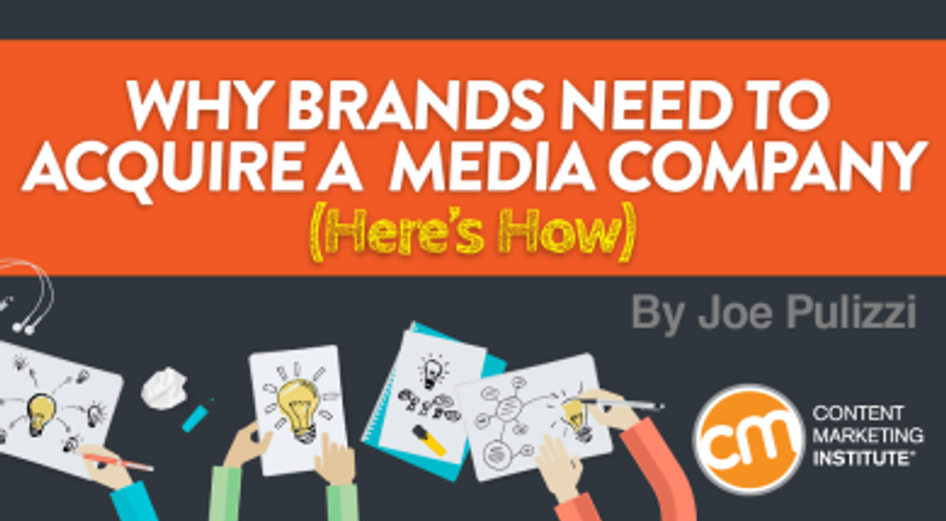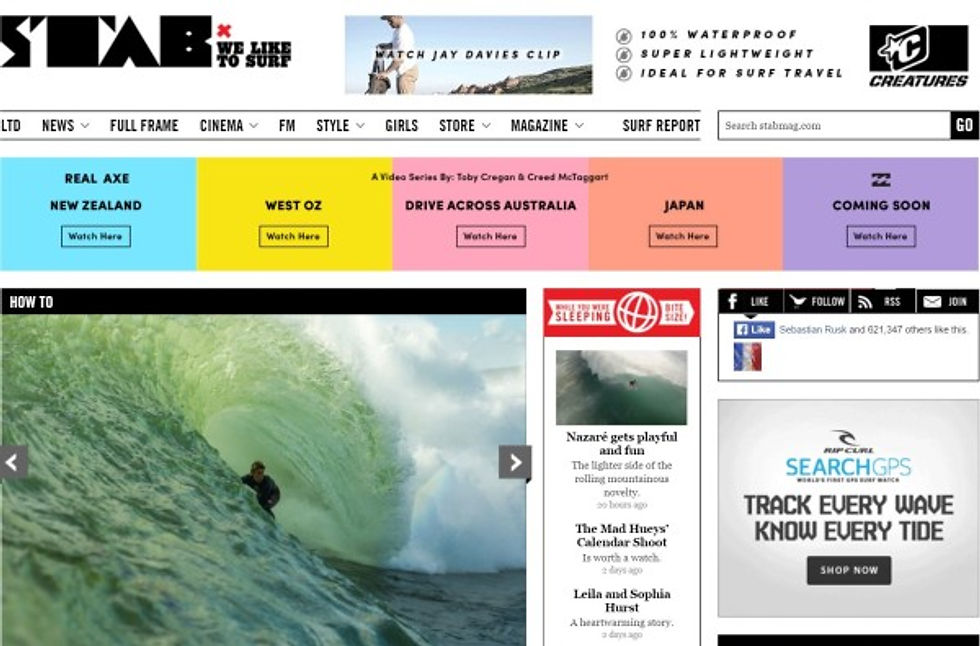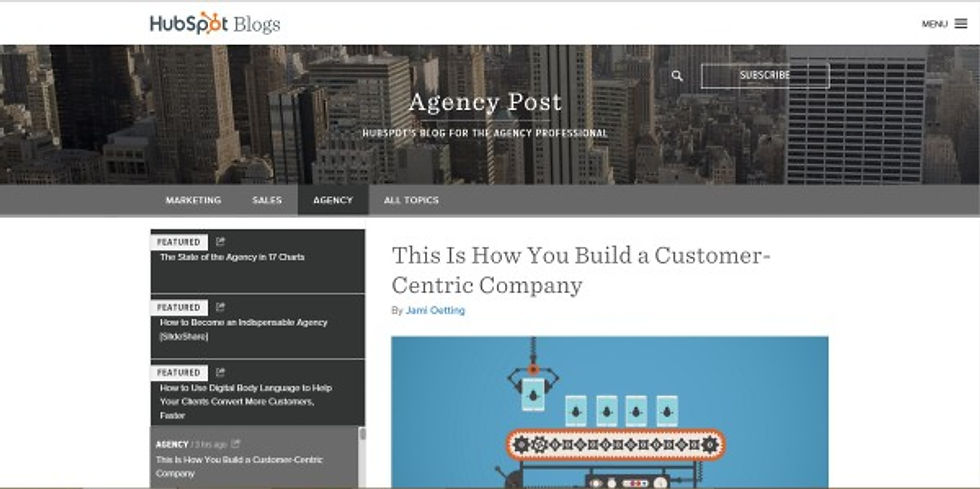Why Brands Need to Acquire a Media Company [Here’s How]
- Fahad H

- Dec 2, 2015
- 6 min read

Last month, ESPN announced that it was closing the sports-journalism destination Grantland. Upon hearing the news, I immediately thought of the opportunity missed by brands such as Nike, Under Armour, and Puma to acquire the site.
Grantland is a well-known brand with significant traffic and loyal subscribers, and considering Nike spends upwards of $3 billion a year on advertising and demand creation (according to Nike reports), the company could purchase the asset for a song (comparably speaking).
But alas, Grantland is dead. In the world of ESPN, Grantland was a tiny property, and after a rift with founder Bill Simmons who left for HBO, ESPN decided to cut its losses.
Grantland aside, a key question remains: Why don’t more enterprises consider purchasing media brands and blogger sites as a shortcut to building a content brand with some teeth? As we’ve discussed aplenty at Content Marketing Institute, building a content platform takes time, patience, and focus … all three of which aren’t in the DNA of most brands.
With large enterprises flush with cash today (Apple has over $200 billion in cash reserves and could buy The New York Times 100 times over), it seems only prudent to consider “buying versus building” as a viable option during this gold rush of content marketing.
Natural in the media world
I’ve had the opportunity to be involved in a number of mergers and acquisitions over my 16 years in publishing. When a media company targets an audience and sees a growth opportunity, the buy-versus-build scenario is ALWAYS considered.
Does it make more sense to launch a start-up media brand or are there opportunities to purchase an existing media brand and/or platform?
This evaluation comes natural to publishers, and is VERY unnatural for marketers to consider. In 99% of the occasions when we bring up this idea to marketers in larger enterprises, the marketing team’s general reaction is one of utter bewilderment. They’ve never even thought of this.
Like it or not, we are all in the media business today and we need to start acting like it.
RECOMMENDED FOR YOU:
Significant barriers
Jay Acunzo published a thoughtful reaction to my original article on Grantland. While Jay believes in the idea of brands buying media companies or blogger sites, he feels that journalists, upon hearing the news of being purchased by a non-media company, would flee for greener pastures:
“Any truly great media property with known, reputable writers would instantly lose that staff as soon as news broke that they’d been acquired by a brand. Even if that brand was as great as Nike.
“Brands lack the historical track record of upholding and protecting editorial excellence, as well as the muscle memory of thinking about the audience first. Those things create the kind of prestige necessary to attract topflight creative talent.
“And while exceptions exist (Starbucks, Red Bull, AmEx, Marriott), it’s still far from the rule that a brand creates standalone media properties where journalists can thrive. Show me one brand who thinks audience-first, and I’ll show you a thousand writers who still won’t work there. There’s a huge stigma that needs to be removed.”
In theory, Jay is right. The majority of journalists still believe that telling stories for brands is like going to the dark side. In addition, most brands do not think audience first … the brand or product generally is the hero of the story.
Regardless, we are starting to see more brands consider buying instead of building. SurfStitch, the fast-growing, surfing web-based retailer, recently purchased two media brands, Magicseaweed and Stab magazine.

Marketing automation company HubSpot had a sales blog and a marketing blog. It believed it needed an online destination just for agencies. Instead of building one from scratch, HubSpot purchased the Agency Post blog … and … presto, now HubSpot has an agency blog.

What brands need to do
Even with some of these smaller M&A examples, Jay believes that a significant “first mover” is needed to get marketers thinking that media acquisition is a viable option. When this “first mover” (let’s say this could be you) makes the decision to purchase a media site or blog, two things need to happen:
1. Create audience-first content and commit to editorial excellence
As soon as the announcement goes out, as Jay explains, the brand “needs to make a big, public stink about its editorial mission and willingness not to meddle in what’s already working.”
Jay says this best: “(The brand) would need to plainly and overtly state that their goals are to ‘maintain and preserve the editorial quality and integrity that the staff has developed.’ They need to acknowledge that it’s a unique move for a brand to acquire such a property – one that, understandably, the staff and/or readers may have mixed feelings about – and they need to let both groups know that nothing is changing when it comes to the reader experience.”
2. Give the content team the space to operate freely
One of the advantages of a brand buying a media company is that the monetization scenario will change. Instead of the need to drive advertising and paid content sales, the acquiring company will look at a variety of other ways to monetize the site (data, customer retention, customer acquisition, etc.).
This “new entity” would have much more flexibility for journalists to be creative, and this needs to be clearly communicated to the content creation team. Jay says that the brand could say something like:
We want to enable even more creative freedom. Publishers often feel friction between editorial quality and page views, in addition to inserting ads into the experience in ways that feel forced. We will face none of those problems, as our model is not to sell ads. It is now paramount that we allow this staff of creatives to do what they do best, without our goals of selling product getting in the way, while providing the resources and independence they need to continue building something the world loves.
Today, the perception of a content brand owned by Dow Jones versus American Express is different. That’s the perception. The reality is this – the models are exactly the same, except for how the money comes in. Dow Jones generates revenue from paid content and sponsorships. American Express generates revenue from selling more products and services. You may believe that the models are significantly different. The writers at those companies certainly do … but if you really look hard at the model, it’s the same except for how revenue is derived.
But we don’t treat brand acquisitions of media this way … at all. We need to have these conversations now so that in 10 years brands can recruit and retain creative talent as effectively or better than media companies can.
What you need to do
I had the privilege of meeting with the CMO for a large consumer-packaged goods company last year while I was overseas. The conversation was around acquiring media sites and blogging platforms. Our exercise was simple. It started by answering these two questions:
Who is the specific audience we are targeting?
Where does that audience hang out on the web, in print, or in-person? Include media sites, blogging sites, and association and member-driven sites.
It should be pretty simple to find five to 10 significant destinations, including online content brands, in-person conferences and events, and possibly even targeted print magazines.
Then begin the research and ask:
How many subscribers does each entity have?
What is the quality of the content and the creative team?
What types of content assets does the brand have that we would deem valuable?
TIP: Most of this information can be acquired by asking for the site’s media kit.
And then it’s up to you and your brand. You need to make some decisions. As you go down the list, do you want to partner with that company in some way or look toward acquiring it (and how that could integrate into your content marketing approach) or will you decide to do nothing?
Considering the possibilities of acquiring a media site as part of your approach needs to be included in your responsibilities as a content marketing professional. If you haven’t already, begin the journey today.
Want to learn more from Joe’s expert insight? Get a copy of his latest book, Content Inc., which delves into the idea of starting a company with a content-first approach.
Cover image by Joseph Kalinowski/Content Marketing Institute








Comments